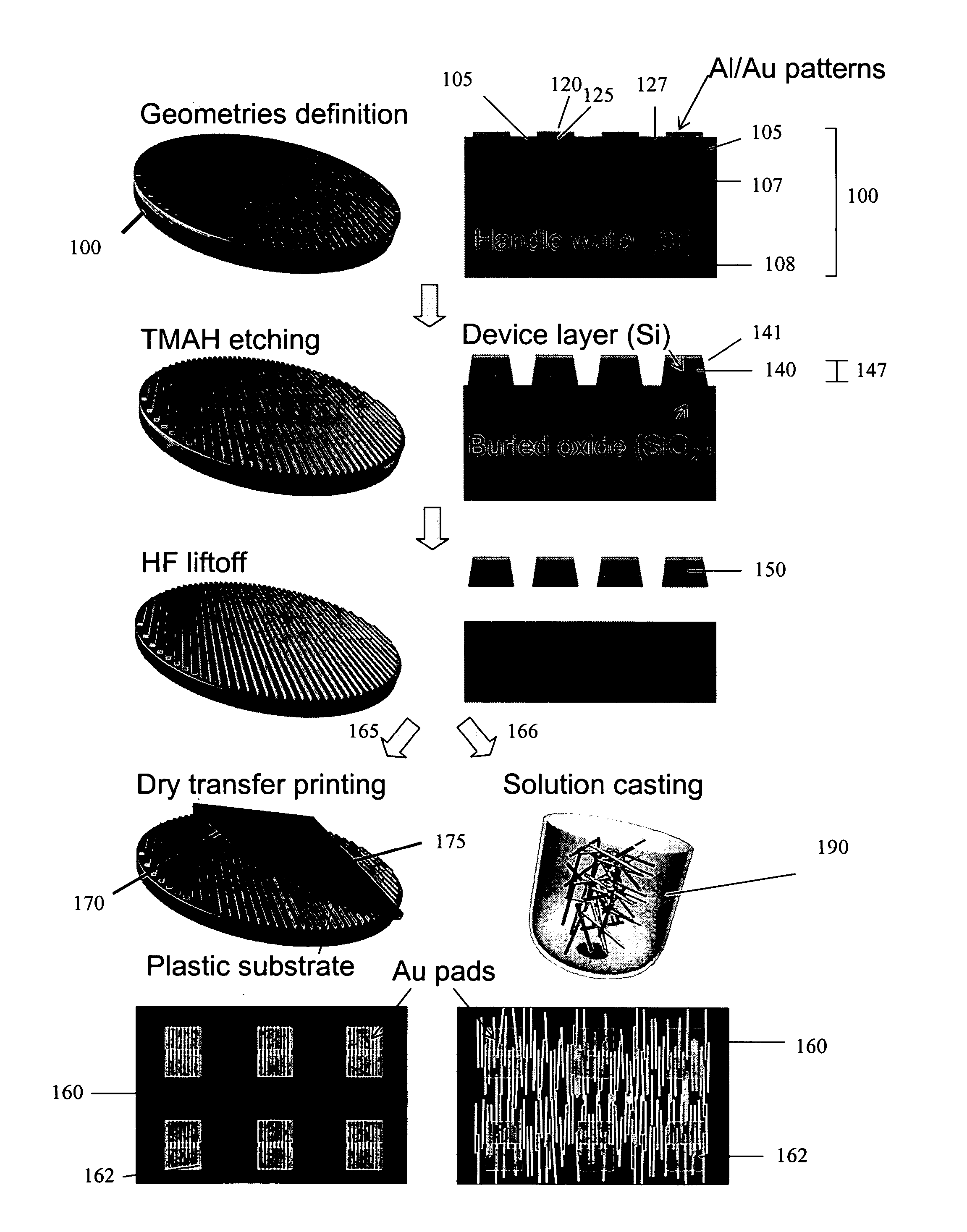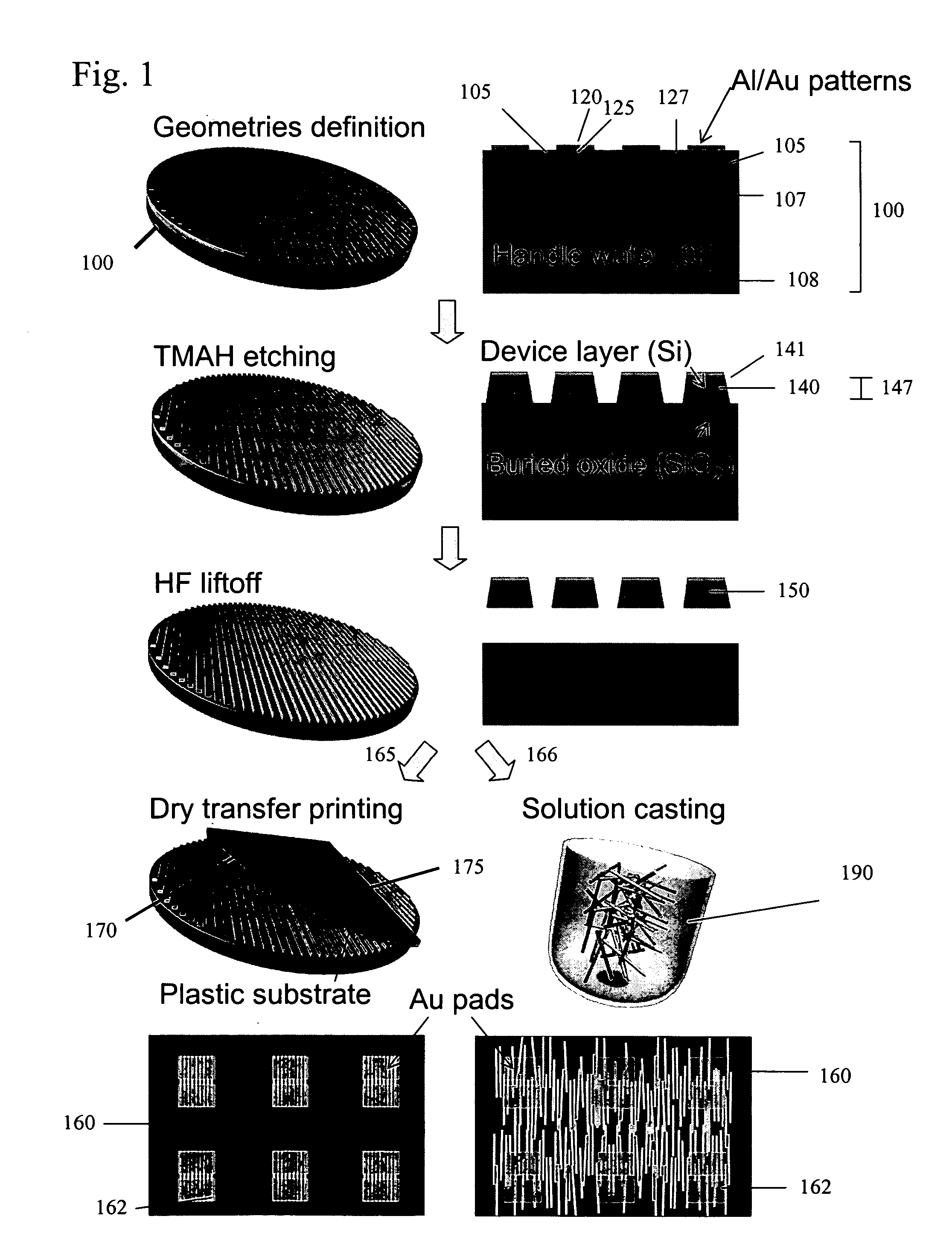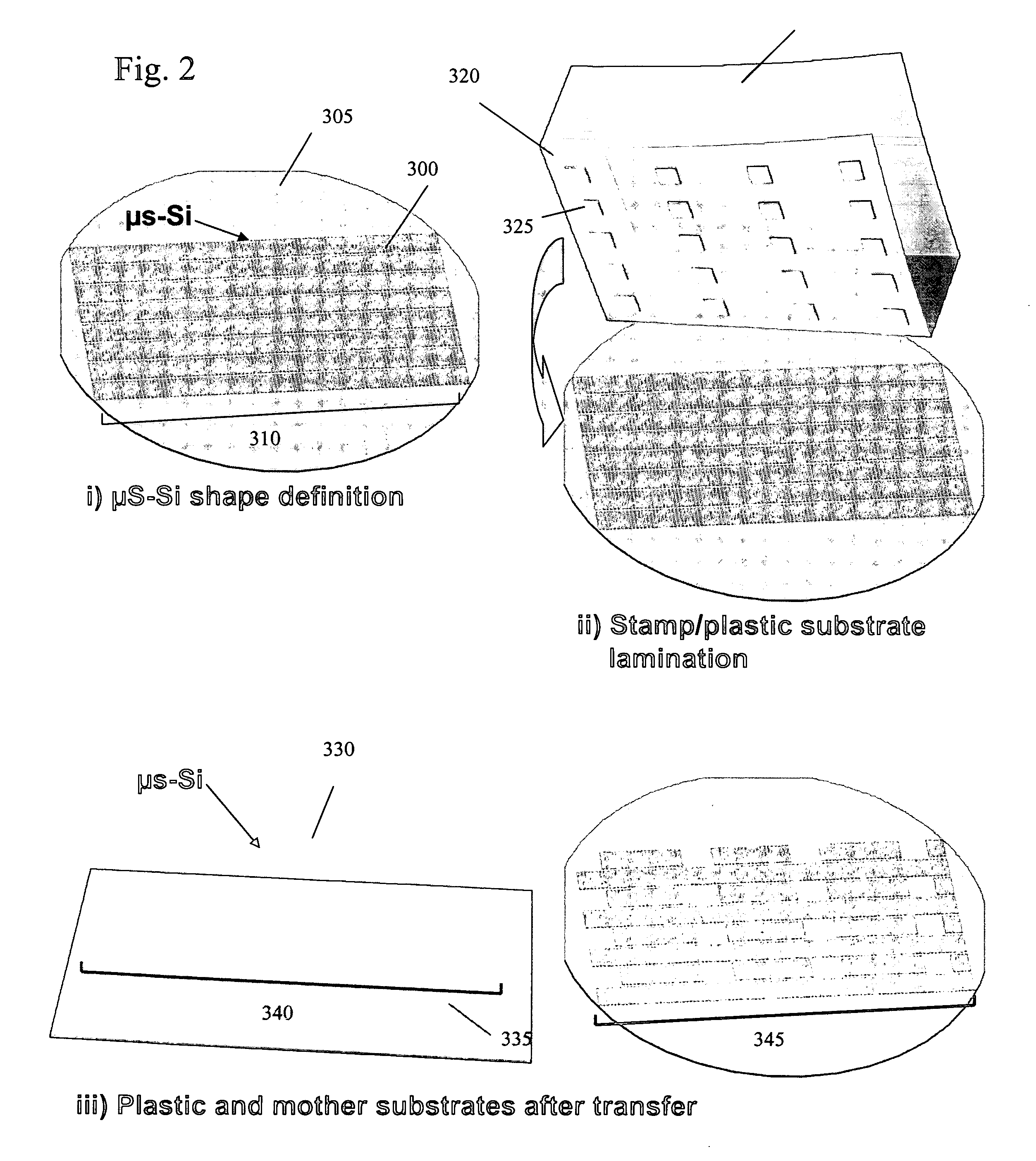Stretchable semiconductor elements and stretchable electrical circuits
a technology of stretchable electrical circuits and semiconductor elements, applied in the direction of sustainable manufacturing/processing, semiconductor/solid-state device details, final product manufacturing, etc., can solve the problems of inability to achieve incompatibility with most plastic materials, and well-developed methods of making conventional silicon-based electronic devices. , to achieve the effect of preventing the complete release of relief structur
- Summary
- Abstract
- Description
- Claims
- Application Information
AI Technical Summary
Benefits of technology
Problems solved by technology
Method used
Image
Examples
example 1
Thin Film Transistor Having a Printable Semiconductor Element
[0167] The ability of printable semiconductor elements of the present invention to provide semiconductor channels in thin film transistors was verified by experimental studies. Specifically, it is a goal of the present invention to provide thin film transistors capable of fabrication on a flexible plastic substrates by printing methods. Further, it is a goal of the present invention to provide high performance thin film transistors on plastic substrates having field effect mobilities, on-off ratios and threshold voltages similar to or exceeding thin film transistors fabricated by convention high temperature processing methods.
[0168]FIG. 7 presents an optical micrograph image of a thin film transistor having a printable semiconductor element. The illustrated transistor 531 comprises source electrode 532, drain electrode 533, printable semiconductor element 534, dielectric (not shown in the micrograph in FIG. 7) and gate e...
example 2
Stretchable Printable Semiconductor Elements
[0179] The present invention provides stretchable printable semiconductor elements capable of providing good performance when stretched, flexed or deformed. Further, stretchable printable semiconductor elements of the present invention may be adapted to a wide range of device configurations to provide fully flexible electronic and optoelectronic devices.
[0180]FIG. 12 provides an atomic force micrograph showing a stretchable printable semiconductor element of the present invention. The stretchable printable semiconductor element 700 comprises a flexible substrate 705 having a supporting surface 710 and a bent semiconductor structure 715 having a curved internal surface 720. In this embodiment, at least a portion of the curved internal surface 720 of bent semiconductor structure 715 is bonded to the supporting surface 710 of the flexible substrate 705. The curved internal surface 720 may be bonded supporting surface 710 at selected points ...
example 3
Methods of Making Printable Semiconductor Elements
[0186] The present invention provides methods of making printable semiconductor elements from a wide range of starting materials, including single crystalline wafers, silicon on substrate wafers, germanium wafers, thin films of polycrystalline silicon and ultra thin silicon wafers. Particularly, the present invention provides low cost methods of making large numbers of printable semiconductors in selected orientations and relative positions.
[0187]FIG. 18A shows an exemplary method for making printable semiconductor elements from a Si—Ge epi substrate. In this method, selective regions of a Si epi layer are masked by depositing a mask material, such as a thin films comprising a metal, SiO2 or SiN. This masking step defines shape and some of the physical dimensions (e.g. length and width for a ribbon) of the printable semiconductor elements to be fabricated. The exposed Si surface of the Si—Ge epi substrate is anisotropically etched ...
PUM
| Property | Measurement | Unit |
|---|---|---|
| thickness | aaaaa | aaaaa |
| thickness | aaaaa | aaaaa |
| thickness | aaaaa | aaaaa |
Abstract
Description
Claims
Application Information
 Login to View More
Login to View More - R&D
- Intellectual Property
- Life Sciences
- Materials
- Tech Scout
- Unparalleled Data Quality
- Higher Quality Content
- 60% Fewer Hallucinations
Browse by: Latest US Patents, China's latest patents, Technical Efficacy Thesaurus, Application Domain, Technology Topic, Popular Technical Reports.
© 2025 PatSnap. All rights reserved.Legal|Privacy policy|Modern Slavery Act Transparency Statement|Sitemap|About US| Contact US: help@patsnap.com



